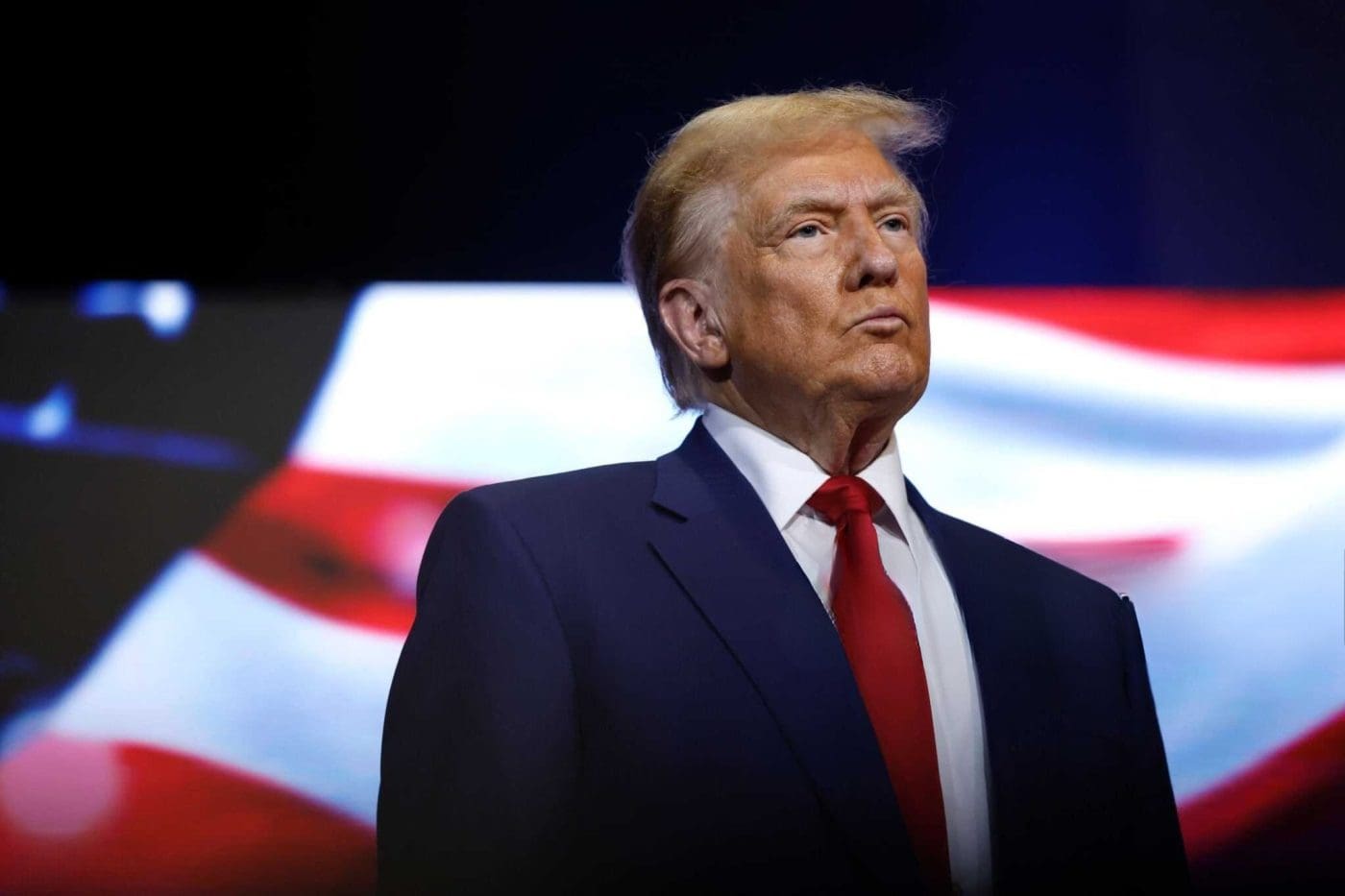United States President Donald Trump has flagged the prospect of changes to his reciprocal tariff plan due to kick-in on April 2, floating the prospect of adjustments and exemptions for certain products and trading partners.
Speaking with reporters at the White House on Monday (Tuesday Australian time) Trump said he might soften reciprocal tariffs he plans to impose on some US trading partners next month, and that some nations might be exempt.
 “I may give a lot of countries breaks,” the Wall Street Journal reported him as saying.
“I may give a lot of countries breaks,” the Wall Street Journal reported him as saying.
Trump’s comments added further confusion about his plans for a sweeping tariff announcement scheduled for April 2. The president told reporters he planned to proceed with long-threatened auto import tariffs “fairly soon, over the next few days” ahead of the broader package.
Trump said his tariff roll-out next Wednesday would focus on so-called reciprocal duties, featuring rates on a country-by-country basis corresponding to tariffs and other trade barriers on US products.
On top of that, he announced on social media he would charge a 25pc tariff on nations purchasing Venezuelan oil, starting on April 2.
Nations in the crosshairs of US tariffs have rushed to set up meetings with Trump administration personnel to offer concessions and other defensive responses in an effort to earn exceptions from the reciprocal tariffs, Reuters reported.
However a White House official cautioned against expecting tariff reprieves, saying “The president is determined to implement reciprocal tariffs that are very strong. People should expect that.”
“We’ve been ripped off by every country,” Trump said after a meeting of his cabinet, predicting that the expected tariffs would raise “astronomical” amounts of money for the US treasury, allowing US tax rates to remain low or come down.
In a request for public comments, the Office of the United States Trade Representative expressed particular interest in submissions for the largest US trade partners, and those with the highest goods trade surpluses.
USTR named Argentina, Australia, Brazil, Canada, China, the European Union, India, Indonesia, Japan, Korea, Malaysia, Mexico, Russia, Saudi Arabia, South Africa, Switzerland, Taiwan, Thailand, Turkey, Britain and Vietnam as being of particular interest, as they covered 88pc of total goods traded with the US.
Impacts on beef, pork
The US Meat Export Federation this morning offered some commentary on tariff issues for beef and pork.
For US beef, truly reciprocal tariffs (ie, charging imports the same rate as the country charges on US beef exports to their market) would be limited to certain countries. However in theory, tariffs could be increased to even higher rates to account for non-tariff barriers imposed by these countries.
“But it is unclear how and whether non-tariff barriers will be included,” US MEF said.
For beef, the issue of tariffs was more complicated than for pork.
“Australian beef enters the US at zero duty. Australia has zero duty on beef imports, but of course Australia continues to ban US beef,” the US MEF said.
“Thus, it is unclear whether a tariff will be imposed to address Australia’s ban on US beef.”
Brazil fills the US’s “Other Country” tariff rate quota (TRQ) of 65,000mt at the low 4.4c/kg rate, but then pays 26.4pc on out-of-quota volumes. Brazil’s tariff on US beef is 10pc, although it has been temporarily waived. More importantly, Brazil needed to eliminate its onerous registration and labelling requirements, US MEF said.
The EU, UK, Japan and Paraguay compete with Brazil for the 65,000 mt Other country quota, which this year was fully utilized by January 17, meaning their exports to the US are also at the full 26.4pc duty.
Tariffs charged on US beef into the EU are zero within the High Quality Beef (HQB) quota, but tariffs are relatively high into UK (12pc +2.53 GBP/kg) and Japan (21.3pc), and Paraguay’s rate is 10pc. The EU and UK maintain non-tariff barriers on US. beef.
New Zealand, Argentina and Uruguay have country-specific TRQs. Argentina and Uruguay also ship out-of-quota at the full 26.4pc.
Mexico, Canada, Nicaragua and Costa Rica have unlimited duty-free access and same for US beef to their countries.
“Thus, for beef, if the full out-of-quota rate is considered, it is possible that tariffs are not increased, except possibly on the UK,” the US Meat Exporters Federation said.
“But perhaps in-quota rates could be increased to 10pc to match what South American countries impose on US beef. But if non-tariff barriers are considered, tariffs could be increased for imports of beef into the US from Australia, UK, EU, Brazil and Argentina,” US MEF said.
US customer countries
For the major import customers of US red meat outside North America, there is a mix of tariff and non-tariff barriers.
Since many of these markets do not export red meat to the US, it is unclear how reciprocal and fair policies will be applied, US MEF said.
The countries with which the US has the biggest trade deficits are the EU, Mexico, Canada, Brazil, Australia, Peru, New Zealand, Chile, Thailand, Singapore, Argentina, Ecuador, Switzerland, India, Costa Rica and Indonesia. Of these, US beef and/or pork face significant market access barriers in the EU, Brazil, Australia, Thailand, Ecuador, Switzerland, India and Indonesia.
The countries with which the US has the biggest goods trade deficits are China, EU, Mexico, Vietnam, Canada, Japan, Taiwan, Korea, India, Thailand, Switzerland, Malaysia, Indonesia, Cambodia, Israel and South Africa.
US red meat faced barriers in all of these countries except Mexico and Canada, US MEF said.

HAVE YOUR SAY